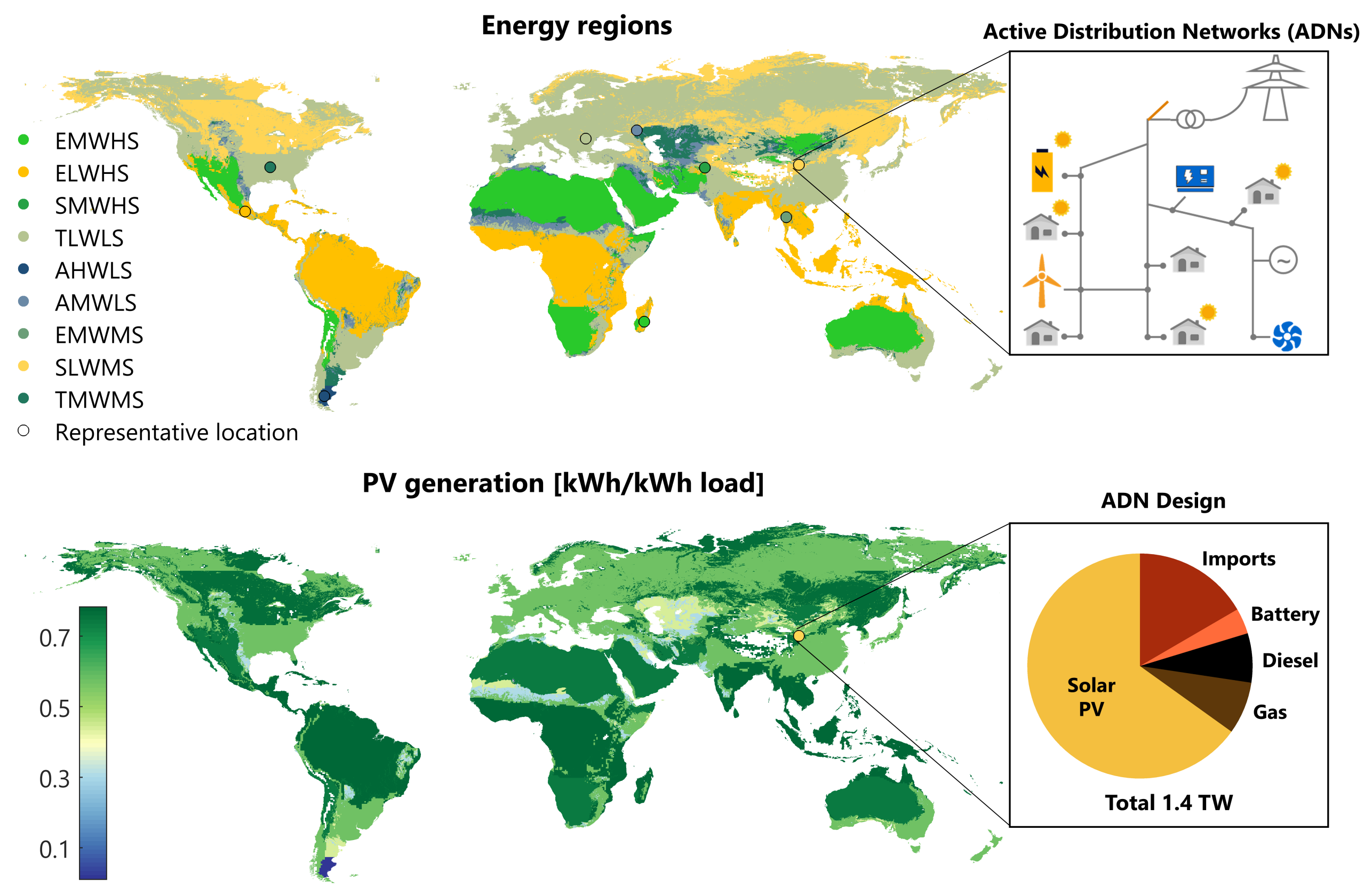Optimal Transition to Active Distribution Networks
Contact: Prof. Giovanni Sansavini
The widespread increase of distributed renewable generation and the proliferation of electric vehicles are bound to threaten the reliable and efficient operation of electrical distribution systems. Proposed solutions include active distribution networks, microgrids and multi-energy systems.
This project investigates a possible transition from current, passive distribution grids to Active Distribution Networks (ADN) by
- Developing effective optimisation methods to plan ADN balancing economy, reliability and environmental impacts
- Studying the impact of widely distributed ADN on customers and the surrounding energy infrastructure

Upper panel: The world is clustered into energy regions based on climate zone (Equatorial (E), Snow (S), Temperate (T), Arid (A)), wind and solar potential (Low (L), Medium (M), High (H)) using the power demand, solar and wind profiles of representative locations. Active Distribution Networks (ADN) are designed via optimization at each location minimizing the annualized costs with constraints on total emissions and supply reliability. ADN supply electricity to the end-users via local conversion technologies and imports from the national grid. Uncertainty analysis captures the effects of the variability of the most influential model parameters on the AND design. Lower panel: The median solar PV generation in the ADN per unit power demand shows that solar PV is largely exploited in regions with high solar potential, thus requiring the installation of limited volumes of devices. Remarkably, solar PV is deployed in local ADN also in regions with low/medium solar potential and irrespective of the wind potential.
